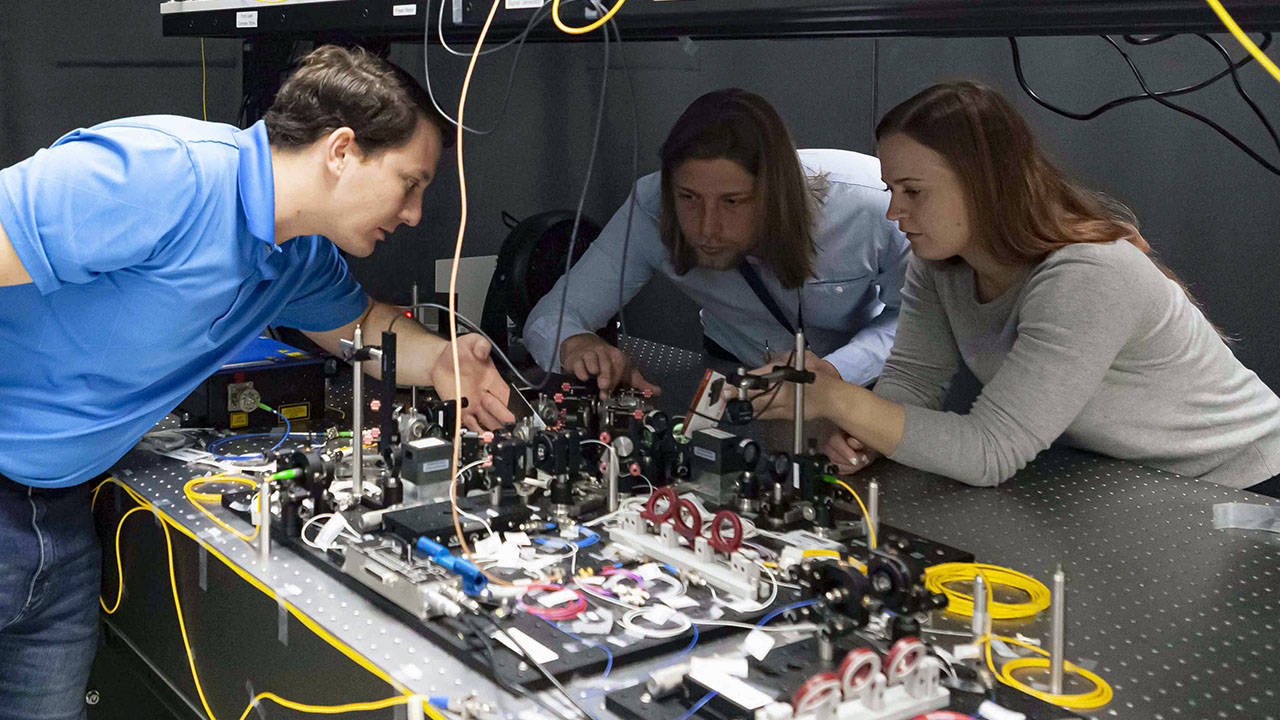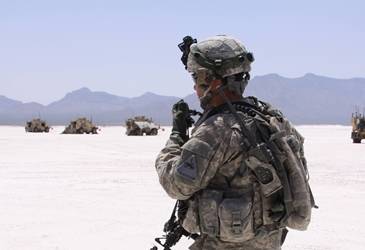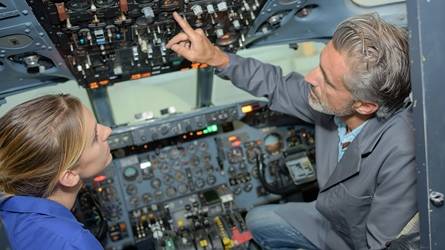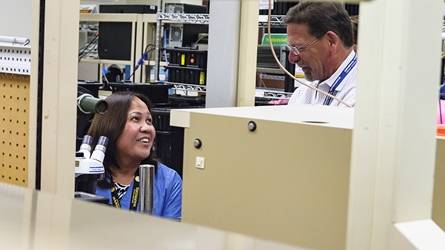Brittany Craig, a member of General Dynamics Mission Systems Quantum Communications team, is researching how to harness the power of Quantum physics to build new military communications systems.
Quantum may hold the keys to inventing the communications systems of the future. At General Dynamics Mission Systems, we have some of the brightest minds in the country researching the fundamental building blocks of nature — like the photons that make up light or the electrons and atoms that make up matter — and exploring technologies that can encode information onto those individual particles. New technology enabled by Quantum has the potential to increase range performance, provide greater position accuracy in navigation systems, enable stronger resistance to jamming in radios, and more.
We spoke with Brittany Craig, a member of our Quantum Communications team, to learn what led to her current role and how the team is researching this groundbreaking technology.
Tell us a little about your background, and what led to your current role as a quantum engineer.
I joined General Dynamics about three years ago in Bloomington, Minnesota, after receiving my undergraduate degree in math and applied physics. I am currently pursuing a master's degree in electrical engineering and will graduate this May.
I don't have a quantum background, but my transition was driven by a curiosity and passion for physics, as well as excitement about working on cutting-edge research.
What does your "typical" day look like?
A typical day starts with a cup of coffee. From there, I spend some time reading academic papers, looking up information about quantum and optics that relate to our experiments, or planning for future experiments. The team meets daily in the new quantum lab on our Scottsdale campus, where we collaborate on the progress of experiments, brainstorm ideas for future expansions and continue planning projects.
A typical afternoon is spent in the lab, working hands-on with the optics equipment and experiments. This includes working with things like lasers, lenses, mirrors, beam splitters, fiber optics, spectrum analyzers, and other lab equipment.
I am working on Quantum R&D projects, where we are doing really cool research on quantum communications and sensing. Since we are a small team, we get to wear many different hats. My role is to build and expand on experiments and demonstrations that show the benefits of using quantum in communication and sensing systems. The way that we do this is using laser light and optics equipment. As of right now, we have about four experiments that are either running in lab or in the works, plus other hands-on learning modules to demonstrate properties of light, such as polarization, interference, and single photon detection.
What do you enjoy most about working on the quantum team?
Playing with lasers, of course! But really, we have the flexibility to be creative and think of ways to best expand the emerging technology. I love working on exciting and challenging work in new technology, and it is great to work with others who motivate me to challenge myself.
What has been the most challenging aspect of your role?
This is tough to answer … for me personally, it's challenging to teach myself quantum physics and optics and come up to speed on the background that helps you understand what is actually going on with the experiments.
It can also be challenging to work on a project with little structure, as things are always changing with research, but just because it's challenging does not mean it is not fun!
Can you tell us more about quantum?
When we study anything quantum, we are looking at ways to use discrete properties of photons, electrons, or atoms, rather than using classical properties that we do today.
In order to use these discrete properties, hardware is required that can create and measure particles at this level. For example, an optical quantum system might require detectors that are capable of sensing single photons. However, quantum does not necessarily need to be used on its own; many techniques require quantum-classical hybrid techniques for improvements.
Quantum is a broad term, and various subfields have emerged from the concepts, such as communications, sensing, information science, or computing. Although these fields all have quantum in common, they are their own fields with distinctions:
- Quantum communications looks at different ways to implement communication systems, such as optical or RF/MW, by using the discrete properties of photons, electrons, or atoms. This can include focusing in atomic and optical physics and engineering.
- Quantum sensing looks at ways to improve sensor capabilities, such as resolution.
- Quantum computing uses discrete particles to compute information and includes the development and use of quantum algorithms.
Why is researching quantum communications important?
Emerging quantum technologies will have an impact on national security, which makes it of interest to General Dynamics and our customers. Since it is such a broad field, quantum is promising the ability to improve various aspects of our systems today.
General Dynamics designs, builds, and integrates systems in communications and sensing, so we care about things like range performance, position accuracy in navigation systems, and resistance to jamming in our radios. Using quantum entanglement of photons, we can show a stronger resistance to noise and signal jamming.
We also have many security applications, so we care about being able to secure communications and detect eavesdroppers. One example of increased security is using a popular technique called Quantum Key Distribution (QKD) that allows two parties communicating with each other to quickly detect if someone is eavesdropping on their messages.
Rather than coming up with more and more complex mathematical algorithms for encryption, this allows for physically secure key generation that is used to encrypt information. Quantum communications technology gives us new capabilities and higher levels of performance.
Updated 2/27/2023




